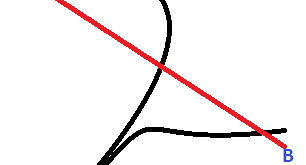ELECTRIC CHARGE
Electric charge is a property of a matter or a substance which causes it to experience a force when placed near other matter or substance.
TYPES OF ELECTRIC CHARGE
There are 2 types of electric charges:
- Positive charge
- Negative charge
A substance acquires charge on rubbing. When a glass rod is rubbed with a silk cloth, both glass rod and silk cloth acquires charge. By convention, the glass rod acquires a positive charge when rubbed to a silk cloth, while a silk cloth acquires a negative charge.
A substance which acquires a charge is known as electrified or charged.
UNIT OF ELECTRIC CHARGE
SI unit of electric charge is Coulomb. It is denoted by the alphabet ‘C’.
IMPORTANT:
Charge on an electron = -1.6 X 10-19 C
Charge on a proton = +1.6 X 10-19 C
Mass of electron = 9.1 X 10-31 kg
Mass of proton = 1.67 X 10-27 kg
PROPERTIES OF ELECTRIC CHARGE
- Like (-, – & +, +) electric charge repel each other, and unlike (-, + & +, -) electric charge attract each other.
- Electric charge is conserved– It means that electric charge can neither be created nor be destroyed but the algebraic sum of the positive and negative charge in an isolated system remains constant.
- They are added algebrically.
- Electric charge is quantified– It means a substance or a body has electric charge which exists in discrete packets.
ELECTRIC POTENTIAL
The work done per unit charge is called electric potential. It can also be defines as the work done in moving a unit positive charge from infinity to that point in the electric field.
Let W be the work done in moving a charge q from infinity to a point in the electric field, then electric potential, V= W/q
UNIT OF ELECTRIC POTENTIAL
SI unit of electric potential is volt. It is denoted by V.
V = W/q
1 volt = 1 joule/ 1 coulomb = 1 J C-1
It is a scalar quantity.
ELECTRIC POTENTIAL DIFFERENCE
Suppose there are 2 points, A and B. Then electric potential difference between 2 points A and B is defined as the work done per unit charge in moving a unit positive charge from point B to A.
It is denoted by ΔV = VA-VB
Thus, it can be calculated as ΔV = W/q
UNIT OF ELECTRIC POTENTIAL DIFFERENCE
SI unit of electric potential difference is volt.
It is a scalar quantity.
INSTRUMENT FOR MEASURING ELECTRIC POTENTIAL DIFFERENCE
Voltmeter is used for electric potential difference.

Q.1. Calculate number of electrons constituting one coulomb of charge.
- 6.25 X 1018 electrons
- 6.23 X 1018 electrons
- 6.25 X 1017 electrons
- 6.25 X 1016 electrons
Ans. a
Q.2. Calculate the potential difference between 2 terminals of a battery if 100 J of work is required to transfer 20 C from 1 terminal of the battery to the other.
- 6 V
- 5 V
- 7 V
- 8 V
Ans. b
Q.3. How much work done in moving a charge of 3 C from a point at 38 V to a point at 48 V.
- 30 J
- 32 J
- 31.2 J
- 30.8 J
Ans. a
 IT2EDU Empowering Education Through Technology
IT2EDU Empowering Education Through Technology

